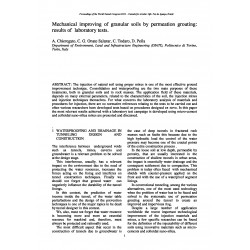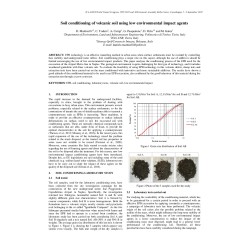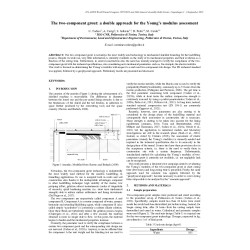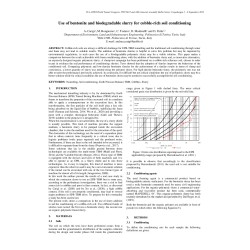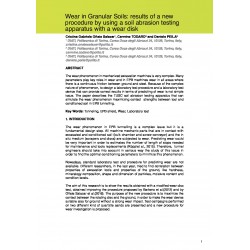No document
Search & filter
Search for a publication
Search & filter
List of products by author: C. Todaro
-
Mechanical improving of granular soils by permeation grouting: results of laboratory tests
Abstract: The injection of natural soil using proper mixes is one of the most effective ground improvement technique. Consolidation and waterproofing are the two main purposes of these treatments, both in granular soils and in rock masses. The application field of these materials, depends on many external parameters, related to the characteristics of the soil, the injection mixes and injection techniques...
0,00 € -
Soil conditioning of volcanic soil using low environmental impact agents
Abstract: EPB technology is an effective tunnelling method in urban areas when surface settlements must be avoided by controlling face stability and underground water inflow. Soil conditioning plays a major role on this aspect, although the use of additives should be limited encouraging the use of low environmental impact products. This paper analyses the conditioning process of the EPB used for the...
0,00 € -
The two -component grouta double approach for the Young’s modulus assessment
Abstract: The two-component grout is nowadays the most widely used technology in mechanized shielded tunneling for the backfilling process. Despite its wide use, very little information is currently available on the study of its mechanical properties and their evolution as a function of the curing time. Furthermore, in several construction sites the need has recently emerged to verify the compliance of...
0,00 € -
Use of bentonite and biodegradable slurry for cobble -rich soil conditioning
Abstract: Cobble-rich soils are always a difficult challenge for EPB-TBM tunnelling and the traditional soil conditioning through water and foam may not lead to suitable results. The addition of bentonite slurries is helpful to solve this problem but may be impaired by environmental regulations, in such cases the use of a biodegradable polymeric slurry may be a viable solution. This paper makes a...
0,00 € -
Wear in Granular Soils: results of a new procedure by using a soil abrasion testing apparatus with a wear disk
Abstract: The wear phenomenon in mechanized excavation machines is very complex. Many parameters play key roles in wear and in EPB machines wear in all areas where there is a continuous friction between ground and steel. Because of the complex nature of phenomenon, to design a laboratory test procedure and a laboratory test device that can provide correct results in terms of predicting of wear is not...
0,00 €

